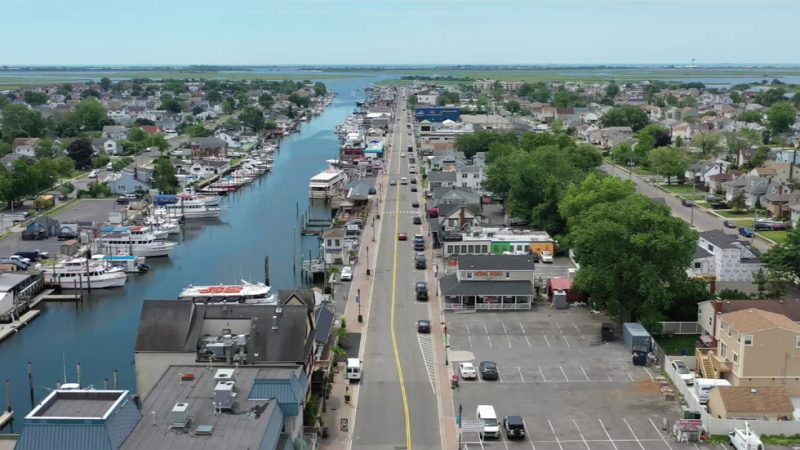Navigating the Iconic St. Gotthard Pass: A Journey through History, Engineering, and Scenic Beauty

Nestled in the heart of the Swiss Alps, the St. Gotthard Pass stands as a testament to human ingenuity, connecting the northern and southern regions of Switzerland. Renowned for its breathtaking landscapes and historical significance, the St. Gotthard Pass has long been a key route for trade, travel, and cultural exchange. This article delves into the rich tapestry of the St. Gotthard region, exploring its history, engineering marvels, and the awe-inspiring vistas that make it a must-visit destination.
Historical Significance:
The St. Gotthard Pass has a storied past that dates back centuries. Originally traversed by traders and travelers on foot, the pass became a crucial link between the German-speaking regions of Switzerland and the Italian-speaking Ticino. Its strategic importance grew with the development of trade routes, leading to the construction of the Gotthard Road in the 13th century, a primitive yet vital artery for commerce.
In the 19th century, the construction of the Gotthard Railway marked a turning point in the region’s history. The railway, known for its spiral tunnels and daring engineering, opened in 1882 and revolutionized transportation through the Alps. This feat of engineering not only reduced travel time but also spurred economic growth and cultural exchange between northern and southern Switzerland.
Engineering Marvels:
The construction of the Gotthard Railway was a monumental task, requiring innovative engineering solutions to overcome the challenging terrain. Engineers faced steep gradients, sharp turns, and the need to maintain a gentle slope for the trains to ascend and descend efficiently. The solution was the creation of the Wassen Spiral Tunnels, a series of three helical tunnels that allowed trains to gain or lose elevation gradually.
The Gotthard Base Tunnel, completed in 2016, represents the pinnacle of modern engineering along the St. Gotthard Pass. Stretching over 57 kilometers, it is the longest railway and deepest traffic tunnel in the world. The tunnel burrows through the heart of the Alps, providing a high-speed, low-gradient route for trains and significantly reducing travel time between northern and southern Europe. The Gotthard Base Tunnel exemplifies Switzerland’s commitment to sustainable and efficient transportation infrastructure.
Scenic Beauty:
Beyond its historical and engineering significance, the St. Gotthard Pass is celebrated for its awe-inspiring natural beauty. The journey through the pass offers panoramic views of snow-capped peaks, pristine lakes, and lush meadows. The Gotthard Massif, with its towering peaks, provides a dramatic backdrop for the serpentine roads and railway tracks that wind through the region.
The nearby Devil’s Bridge, a 13th-century stone bridge that spans the tumultuous Reuss River, adds to the scenic allure of the area. Legend has it that the bridge was built with the help of the devil himself, highlighting the challenges faced by builders in this rugged terrain.
Seasonal Changes:
The St. Gotthard Pass undergoes a remarkable transformation with each season. In winter, the region is transformed into a winter wonderland, with snow-covered landscapes and frozen waterfalls. The winter months bring opportunities for skiing and snowshoeing, attracting winter sports enthusiasts from around the world.
As spring arrives, the pass experiences a vibrant burst of color as wildflowers blanket the meadows. Summer brings mild temperatures, making it an ideal time for hiking and exploring the numerous trails that crisscross the area. Autumn paints the landscape with warm hues as the deciduous trees prepare for winter, creating a picturesque tableau.
Cultural Heritage:
The St. Gotthard region is not only a testament to natural beauty and engineering prowess but also a repository of cultural heritage. The diverse linguistic and cultural influences from the north and south of Switzerland converge in this unique mountainous crossroads.
Local traditions, festivals, and cuisine reflect the fusion of German and Italian cultures, creating a distinctive identity for the St. Gotthard region. Visitors can immerse themselves in the local culture, savoring traditional Swiss dishes and participating in festivals that celebrate the rich tapestry of the region’s history.
Conclusion:
The St. Gotthard Pass stands as a symbol of human achievement, seamlessly blending history, engineering, and natural beauty. Whether traversing its winding roads, riding the scenic railway, or exploring the surrounding landscapes, visitors are treated to an unforgettable experience that transcends the boundaries of time and geography. As a vital link between Switzerland’s northern and southern regions, the St. Gotthard Pass continues to captivate travelers, offering a journey through the ages and an appreciation for the harmonious coexistence of nature and human innovation.






